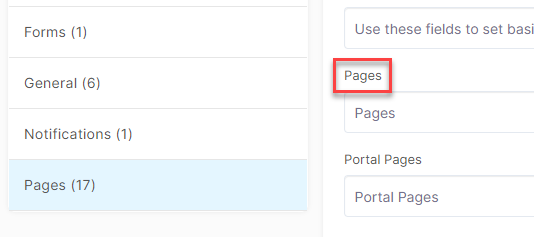What is a Portal Page?
A Portal Page is a page that can be created, filled with information and resources (images, useful links, etc.), and assigned to Contacts and/or Staff Members. You can use Portal Pages to share information, display announcements, videos, charts, and much more!
Portal Pages can be accessed by any User who is assigned to it. You can assign users by Role, Circle, or individually. Multiple users viewing the Portal Page will see the same thing, except that any Dynamic Data Placeholders used will generate unique, personalized information.
CLICK HERE to learn about Dynamic Data Placeholders
You can also apply prebuilt Portal Page Templates to your Portal Page. More information is in the sections below.
How do I create a Portal Page?
To create a new Portal Page, navigate to Content > Portal Pages > Add New Page.
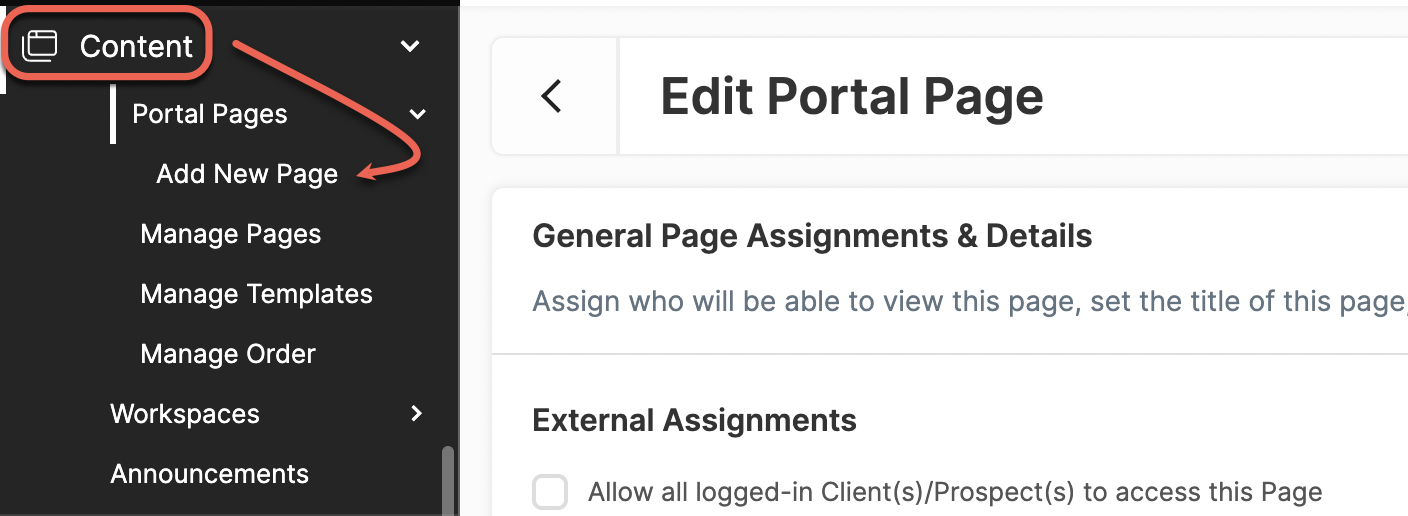
TIP: This Menu Item functions differently for Contacts, which you can read more about below.
GENERAL PAGE ASSIGNMENTS & DETAILS
Assign Contact(s) to grant access to view this Portal page. If you would like to grant access to all Prospects and Clients, you can check the check box at the top of this subsection.

You can assign individual Contacts or all users in a Circle.
You can quickly create a Circle by clicking +Add Circle.
CLICK HERE to learn about Circles
Assign Staff Member(s) to view this Portal Page. If you would like to grant access to all Internal users, you can check the box at the top of this subsection.

You can assign individual Staff Members or all users in a Team.
CLICK HERE to learn about Teams
CONFIGURE DYNAMIC MENU
Enable and disable a Category / Menu Group.

Category / Menu Group: This is the title of the (expandable) Mid Sub-Level Item that your Page will be nested within. For example, if we name this Menu Group "Account", your Contact will navigate to Pages > Account to reveal the link to your Portal Page.
Hide this Page in the Dynamic Pages Menu: Enabling this option will remove the Page from the default Pages menu item in the main menu.
TIP: Role-based permissions do not apply to the Dynamic Pages Menu. The Dynamic Pages Menu (DPM) is automatically built "on the fly" each time a user logs into the platform. It is automatically populated with only the Portal Pages that the logged-in user has permission to view, and that is the reason you are not able to set the visibility using Custom Menus. If the logged-in user has not been assigned to any Portal Pages, then this "Pages" menu item will not show at all to that particular user.
FromCustom Menus, you can control where this menu item is placed, and you can change the label of the menu item.You can manage whether or not Portal Pages show in the DPM from the assignments areaof the appropriate Portal Page(s).
Page Title: The full title that your Contact will see while viewing the Page. This is not to be confused with the Menu Title, which is how it is named in the Menu.
Menu Title: This is the name of the Sub-Level Menu Item that when clicked, will bring your Contact to this page. For example, if we name this Menu Title "Product A" and we've named the Menu Group from earlier "Account," your Contact will navigate to Pages > Account > Product A.
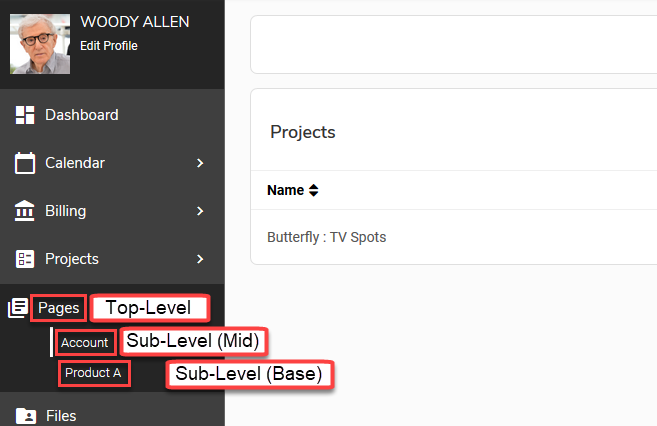
IMPORTANT: The Client-side Pages menu is Auto-Generated and Auto-Organized based on the Admin's configured settings. If a Client does not have Portal Pages assigned, then they WILL NOT see the Pages menu in their navigation.
EDIT PAGE CONTENT

Begin by choosing either the Block Editor or the Article Editor. Both Editors are capable of creating rich HTML pages that include images, formatted text, etc. You can even switch to the HTML source and embed code from other sources such as YouTube, Vimeo or Google Docs.
CLICK HERE to learn about the Content Block Editor
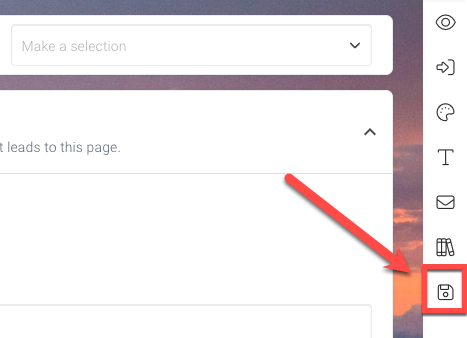
You can click the icon shown above to Save the Page at any time.
How do I preview the Page?
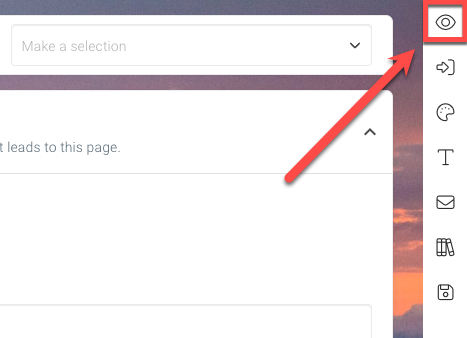
To see a preview of the Page, click the icon shown above.
A preview of the Page will appear in a modal. You can switch between how the content will appear on a desktop, tablet, or mobile phone.
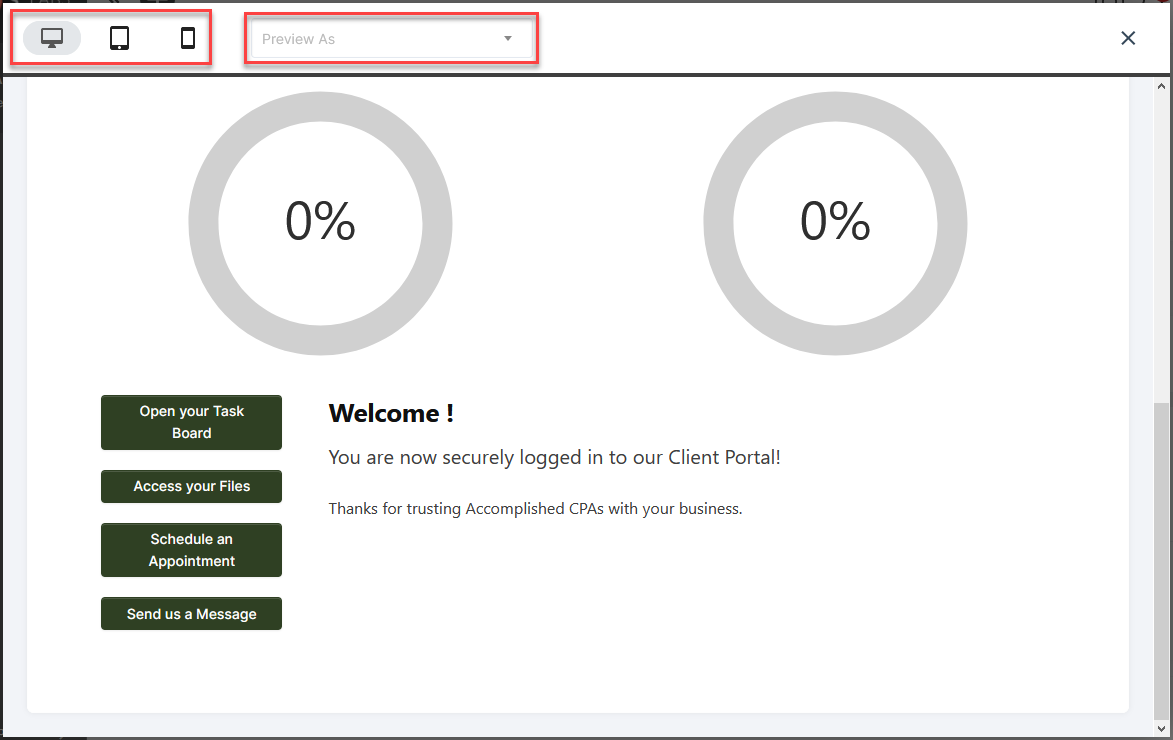
You can also choose to preview the Page as a particular user by selecting from the Preview As dropdown menu.
TIP: If you are using Placeholders (including Forms), you will not be able to see the generated data until you preview it as a user.
How do I create a Start Page?
If you want the Portal Page to be the first page a Contact see's when they enter their Portal, you can turn it into a Start page.
CLICK THE FOLLOWING ICON TO TURN YOUR PORTAL PAGE INTO A START PAGE.
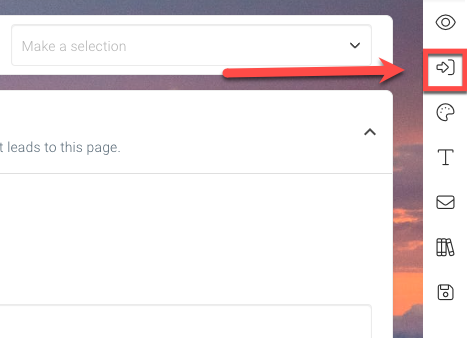

THE CONTACT WILL STILL HAVE THE ABILITY TO SEE THEIR DASHBOARD HOWEVER THE FIRST PLACE THEY ARE DIRECTED TO IS THE START PAGE UNTIL THE CONTACT IS REMOVED FROM THE START PAGE SETTINGS.
How do I configure Styling Options?
Click the palette icon shown below to configure styling options for the Page.
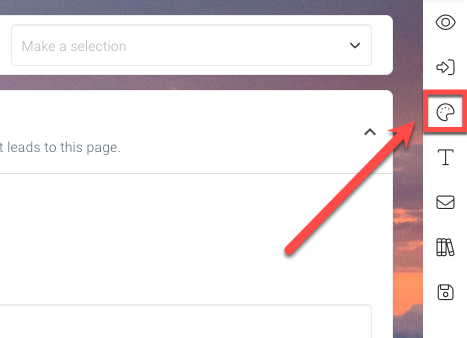
Change/Hide the Page Title Bar
Enabling this setting will allow you to choose one of two options for the Page Title Bar.
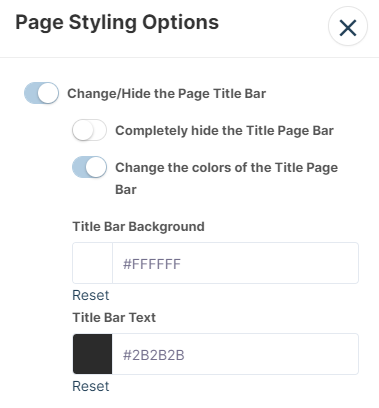
The Title Bar is a small strip that extends across the top of a window or tab.
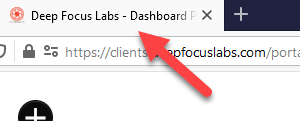
Completely hide the Page Title Bar: This will remove the Page Title Bar from view.
Change the font/colors of the Page Title Bar: This will display the Page Title Bar but will give you the ability to customize the color of the text and background. You can choose the color from a Color Picker for each field.
CHANGE/HIDE THE CONTENT CARD
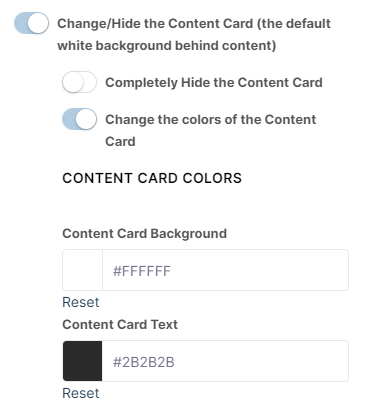
Enabling this setting will allow you to choose one of two options for the Content Card. The Content Card is the background behind the content (default white).
Completely Hide the Content Card: This will remove the border around the content you see all throughout the platform.
Change the colors of the Content Card: This will display the Content Card but will give you the ability to customize the color of the text and background. You can choose the color from a Color Picker for each field.
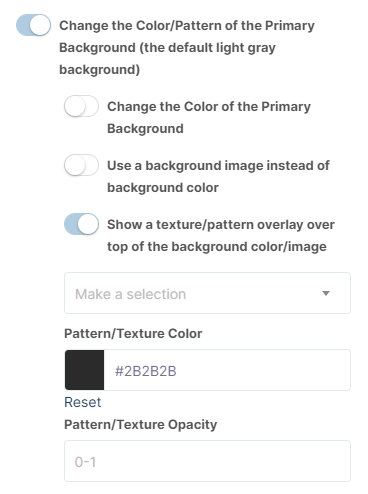
CHANGE THE COLOR/PATTERN OF THE PRIMARY BACKGROUND
Enabling this setting will allow you to choose one of three options for the Primary Background. The Primary Background is the main background (default light gray).
Change the Color of the Primary Background: If enabled, you'll be able to choose a color with a Color Picker. You can also use the texture/pattern overlay option in addition to this one if desired.
Use a background image instead of a background color: If enabled, you'll be able to choose an image to display with a File Uploader.
Show a texture/pattern overlay over top of the background color/image: If enabled, you'll be able to choose from a selection of patterns along with the pattern color and opacity. You can still set the Primary Background color to be used in conjunction with this option.
CUSTOM CSS/JS
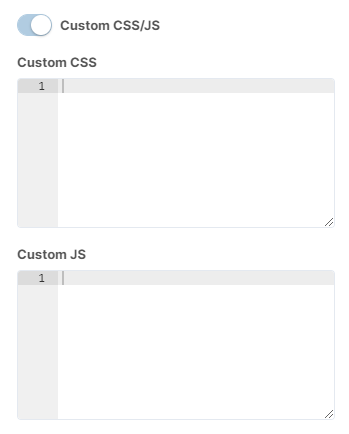
Advanced users can input their own Custom CSS or Custom JS into this section to further customize your Page.
IMPORTANT: Any configurations you set in Styling Options will NOT be visible in the editor. To see the changes, you should use Preview Mode.
How do I style text?
When using text in your pages, you can choose the text/heading type by clicking the below icon in the text block
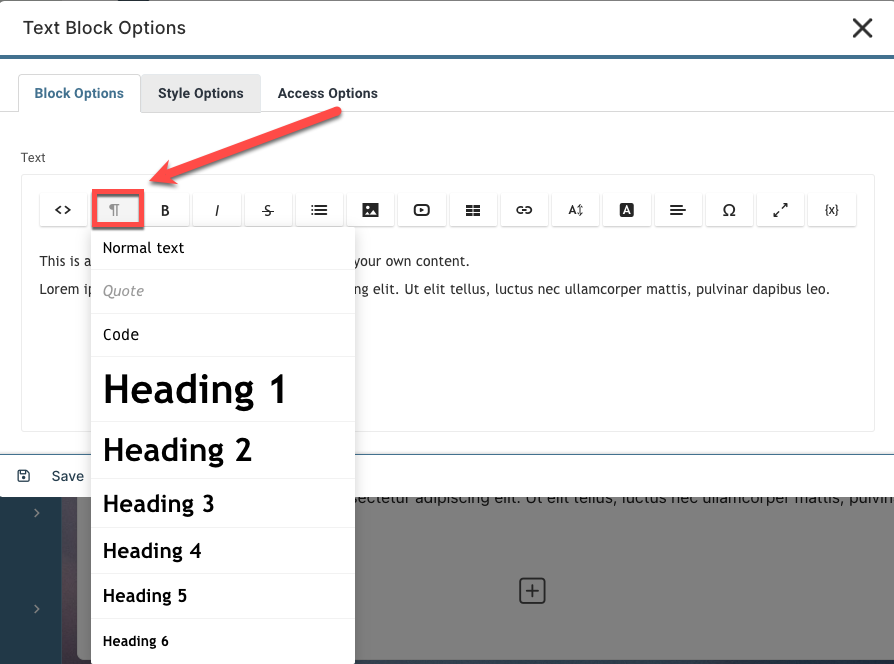
Now go to the sidebar and click theText Icon to add your preferred Font details;
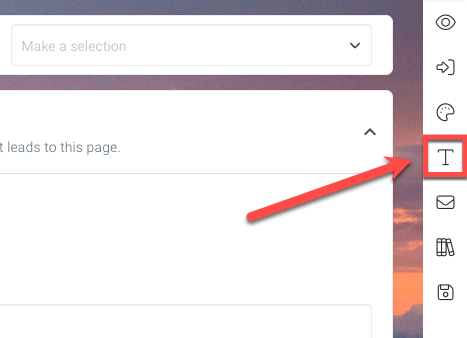
Choose from the list of Google Fonts and select the size, color, weight and letter spacing.
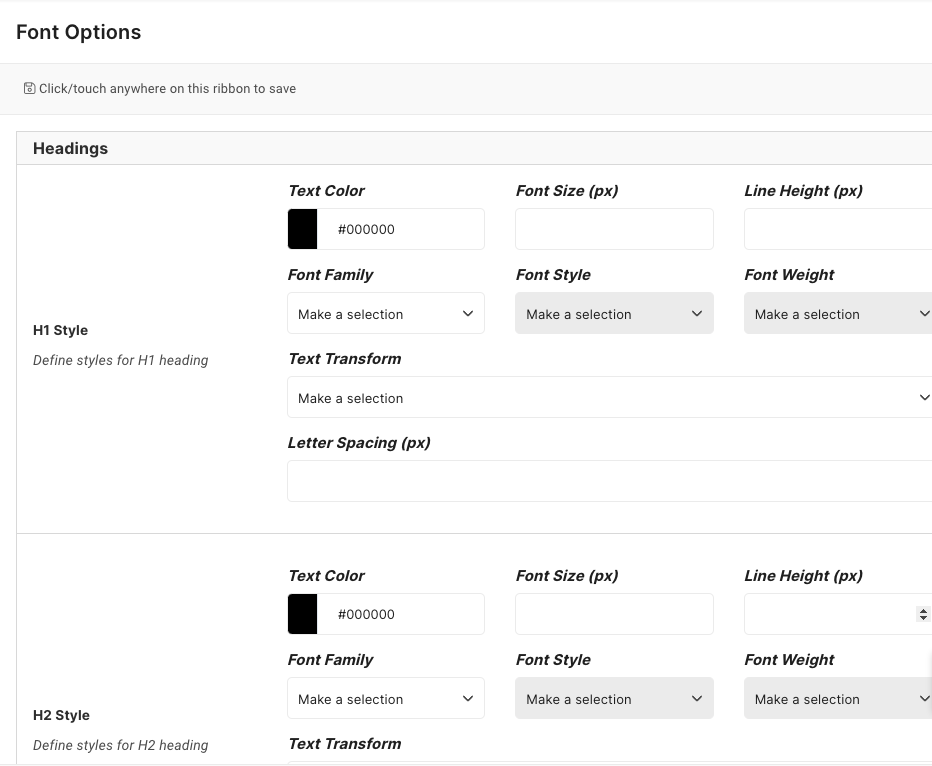
Please note, you can check your Text/Font by clicking Preview. The Font Styling is not visible when editing the Portal Page.
How do I configure Notification Settings?
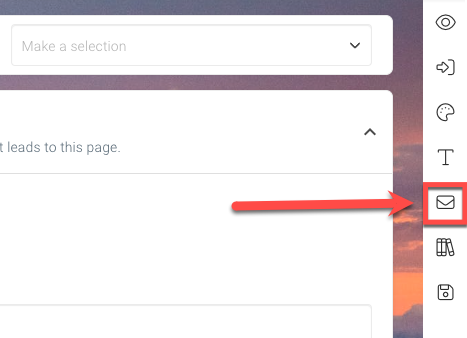
Click the icon shown above to configure Notification settings for this Page.
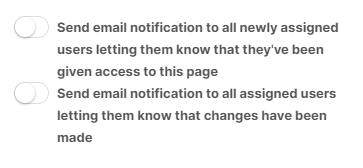
You can choose to send an email notification to all newly-assigned users letting them know they've been given access to this page. This option will not be available if "Allow all logged-in Client(s)/Prospect(s) to access this Page" is checked in the External Assignments section.
You can also choose to send an email notification to all assigned users any time a change is made to the Page.
How do I apply a Portal Page Template?
While creating or editing a Portal Page, you can apply a Portal Page Template with preloaded content, so that you don't have to build the Page from scratch.
CLICK HERE to learn about Portal Page Templates

Click the icon shown above to select a Portal Page Template to load.
A modal will appear with a preview screen, in which you can choose your Portal Page Template from the dropdown menu at the top.
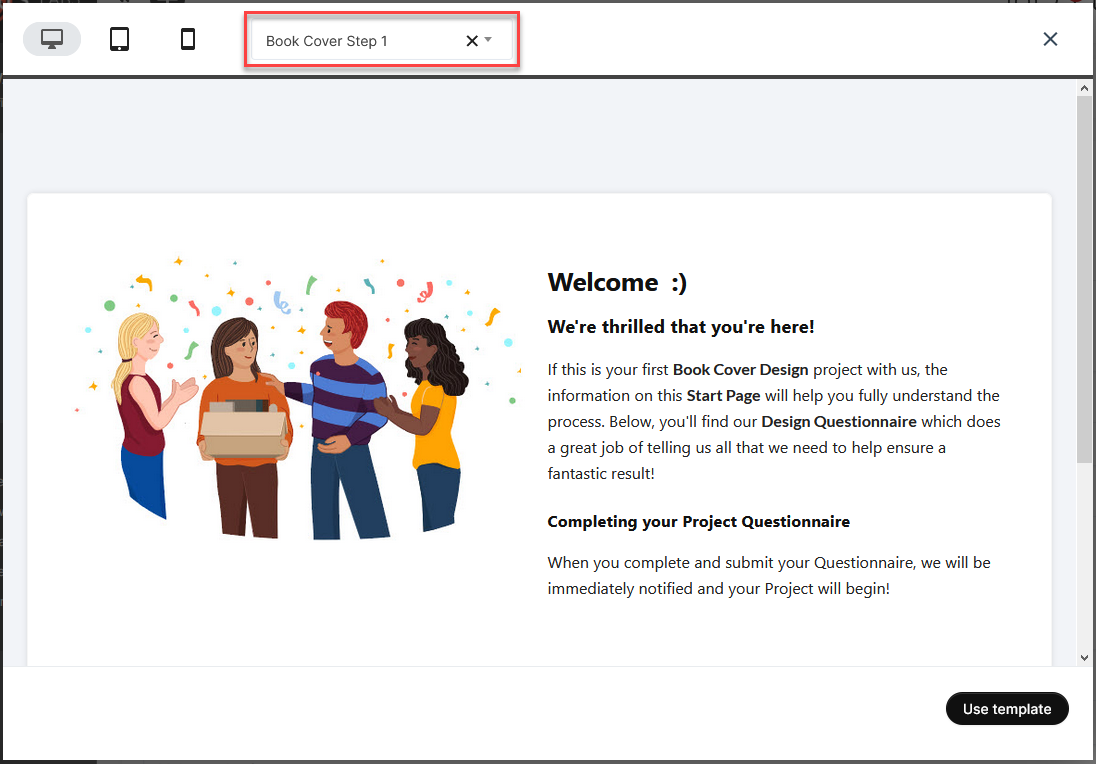
Once applied, you will be able to continue to edit the Portal Page as normal.
How do I switch between my Portal Pages?
While working on a Portal Page you can easily switch to a different Page by clicking on the dropdown and selecting one from the list. You will see this dropdown on the top right and it will be titled the name of the current Page you are working on. If you are working on a brand new unnamed page the dropdown will be blank.

How do I manage my Portal Pages?
Once you have Pages created, navigate to Pages > Portal Pages > Manage Pages.
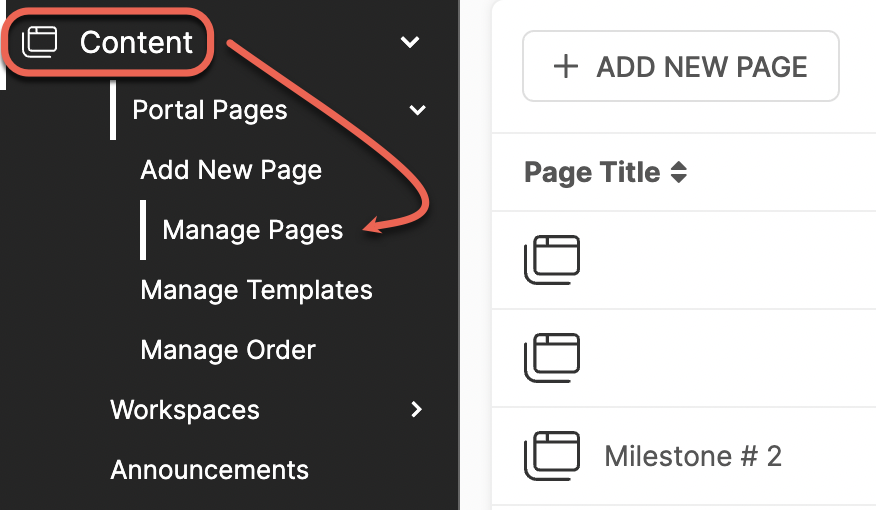
Click the Options menu button beside a Page you would like to manage.
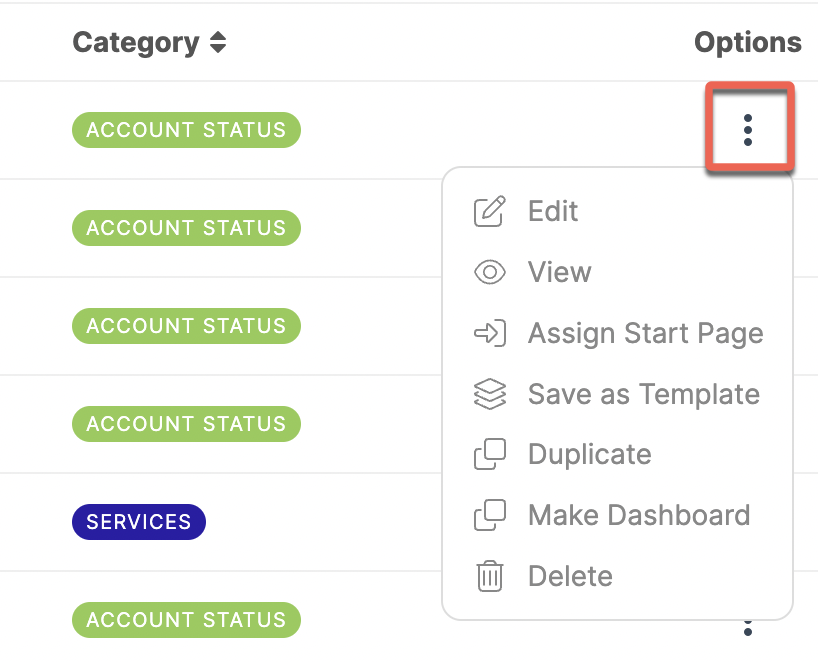
Edit: You can edit the assignment details, menu display, and Editor content, exactly as when you were creating the Page.
View: Preview the Page (with the Placeholder tags showing).
Assign a Start Page: Select this option to automatically direct the user to this Page when they log in. It will bring up a window in which you can choose users and/or Circles from the respective dropdown menus.
CLICK HERE to learn about Start Pages
Save as Template: You can save the content as a Portal Page Template, which you can use to apply to other Pages.
CLICK HERE to learn about Portal Page Templates
Duplicate: Create a copy of the Page. Clicking this option will automatically direct you to the Editing screen of the copy.
Make Dashboard: Add this Page to your list of available Dashboards.
CLICK HERE to learn about Dynamic Dashboards
Delete: Remove the Page from the platform. Note: This cannot be undone.
How do I update the Visibility Settings?
Go to Content > Portal Pages > Manage Pages > Settings. You can now choose which Staff Members will be able to access Manage Pages.

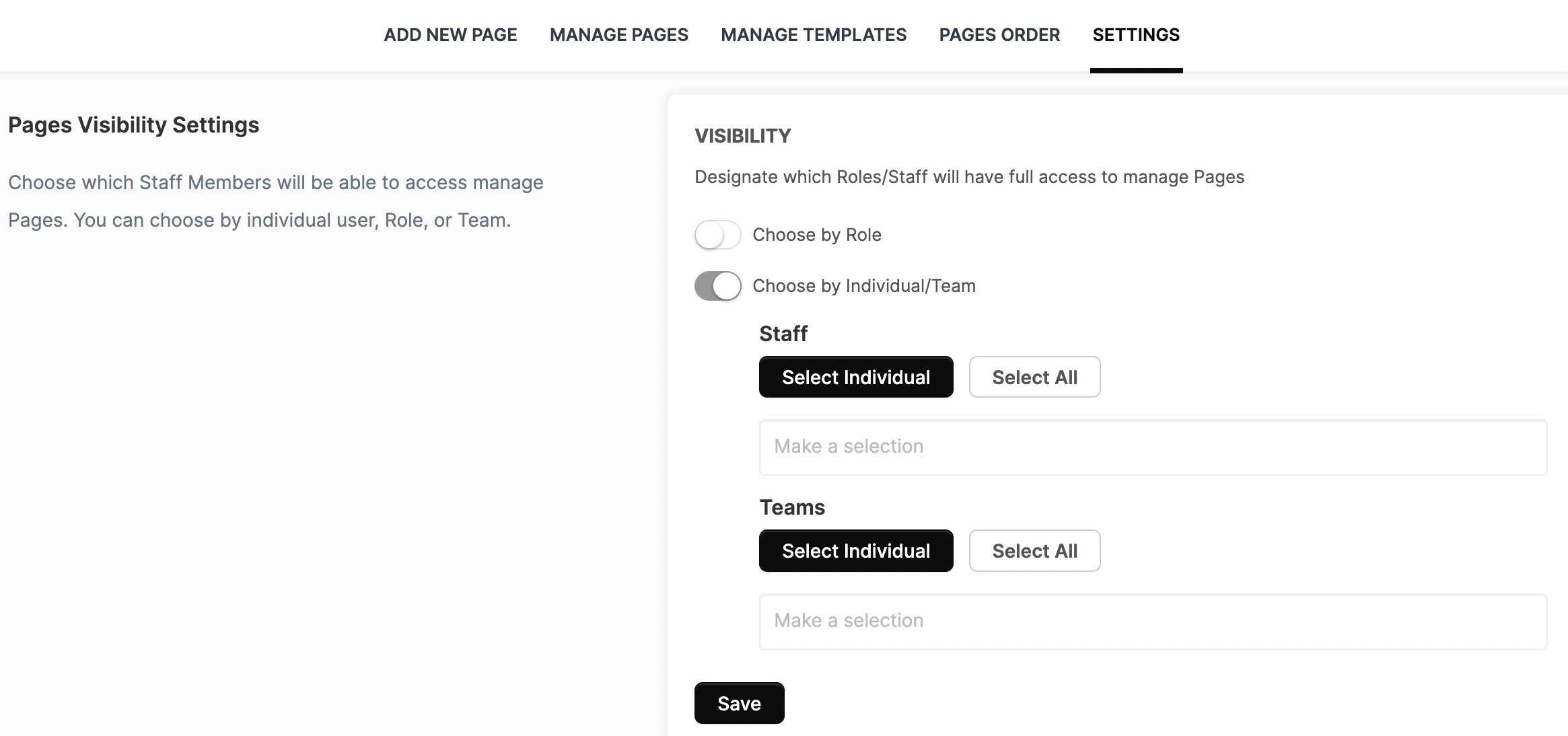
How do I change the order of my Pages in the Menu?Navigate to Content > Portal Pages > Manage Order.
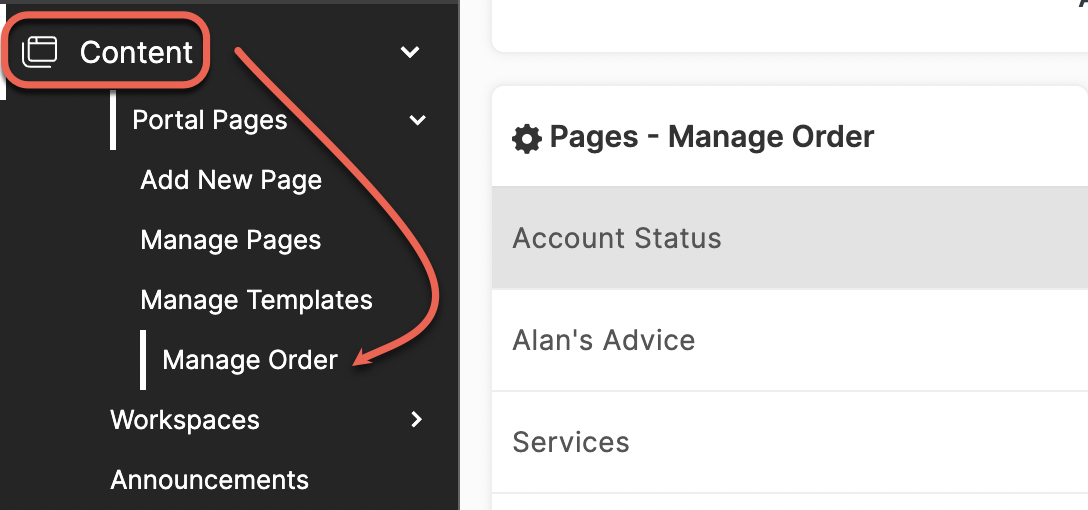
Click the Menu Group you would like to rearrange. Under Order Pages, click and drag the Menu Items to your desired order.

TIP: If you want to change the order of the Page Categories in the main menu, you can do this from Flyout Menu > Content Categories.
CLICK HERE to learn about Content Categories
What does the Contact See?
When you assign a Portal Page to a Contact, their Pages Menu Item will be structured depending on how it was configured.

Content functions as a Top-Level Menu Item just as it does for Staff. However, the nested Sub-Level Items will be what you specified as the Category / Menu Group and the Menu Title of the Portal Page.
How do I change "Content" to something else?
Most menu item names can be changed with Custom Menus. However, changing the name for Content will only change it for the Staff-side.
To change "Content" on the Staff side, navigate to Flyout Menu > Custom Menus.
CLICK HERE to learn about Custom Menus
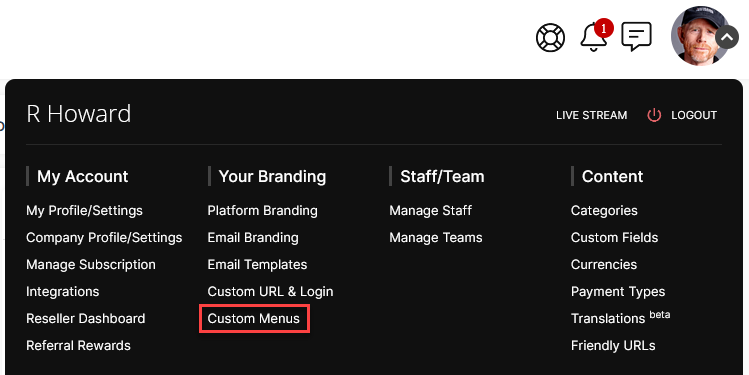
Click the icon and input the desired name.
To change the "Content" menu item name for Contacts, you'll need to use our Translations tool.
Navigate to Flyout Menu > Translations (beta).
CLICK HERE to learn about Translations
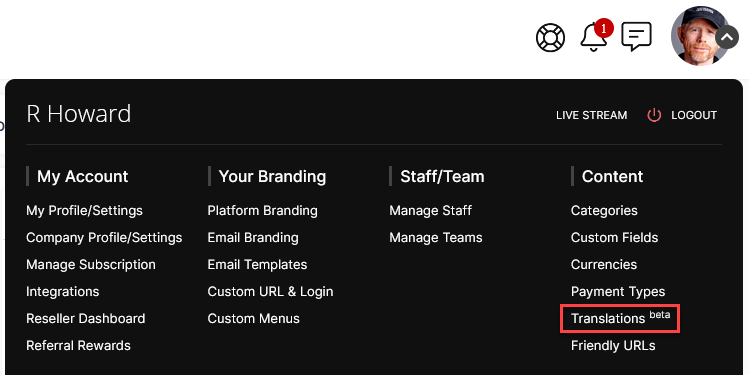
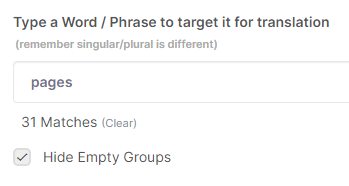
The following is where the Pages menu label is located.
